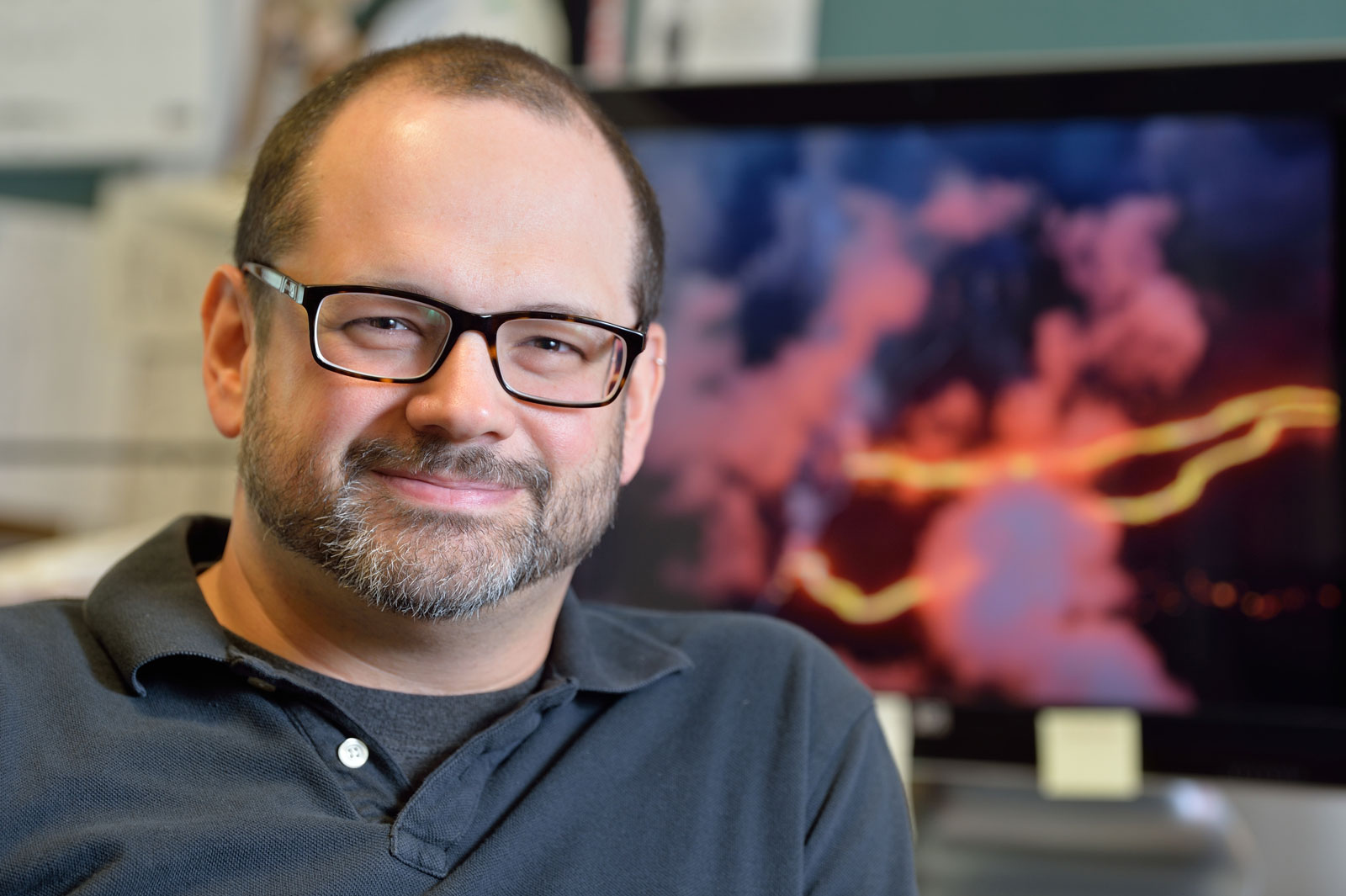Professor Erik Klemetti is a top researcher — and writer — on his favorite topic: volcanoes.
In addition to teaching Earth and environmental sciences to Denison students, Klemetti shares his knowledge about volcanoes and other earth science-related phenomena with readers everywhere through his Rocky Planet blog. Since its inception in 2008, several platforms have hosted Rocky Planet (under various names), including Wired — it now has a home with Discover Magazine.
The National Association of Geoscience Teachers recently recognized Klemetti for his contributions to scientific writing, naming him the 2022 James E. Shea awardee. He joins fellow honorees and authors Bill McKibben, John McPhee, and Steven Jay Gould, who have made science topics accessible and enjoyable without sacrificing knowledge for readability.
“People think they need to be an expert in the field, which is not the case,” Klemetti says. “Science writing is about asking questions to understand what you don’t know — like any good reporter. It’s about explaining and creating a human narrative.”
Drawing on his science writing experience, Klemetti has added journalism courses to his teaching schedule at Denison.
Science writing: breaking down the complex
Despite the potentially alarming character of his headlines, such as “Major Blast in Tonga Creates Tsunami and Heavy Ash Fall,” Klemetti isn’t trying to cause panic. “I’m trying to educate and dispel myths and misinformation.”
“Writing about science isn’t anything I intentionally planned to do,” Klemetti says. “But I realized how much people want to understand why these things happen.”
Erupting volcanoes are cataclysmic events, but Klemetti finds engaging ways to approach his topic. One of his most-read posts coincided with the release of the final chapter of the Lord of the Rings movie trilogy. It answered the question, “When Gollum falls into the volcano, would he have really just sunk into the lava?” (The short answer: no. Read the full response, which refers to the specific gravity of people vs. molten rock.)
Why do volcanoes erupt?
Klemetti’s current research, funded by the National Science Foundation, takes place at the Tumalo volcanic center of Bend, Oregon. It’s pertinent to a debate emerging in the field: What exactly is happening inside a volcano before it erupts?
“Are volcanoes ready to erupt all the time?” Klemetti asks. “Or are they unable to erupt because they’re mostly sticky, in sort of cold storage? And if that’s true, what triggers a change?”
Mapping the inside of a live volcano is out of the question, so Klemetti seeks his answers in the crystals that form in magma as the molten rock cools along the interior walls of a volcano.
“This project is super cool,” he says. “We’re filling in a time gap in the Cascade mountain range, looking at the ages of eruptions and how the magma has been stored.”
Klemetti completes a circle by bringing his research results back to the classroom. “We teach things we find are interesting, and bring them into our courses in a meaningful way.”
